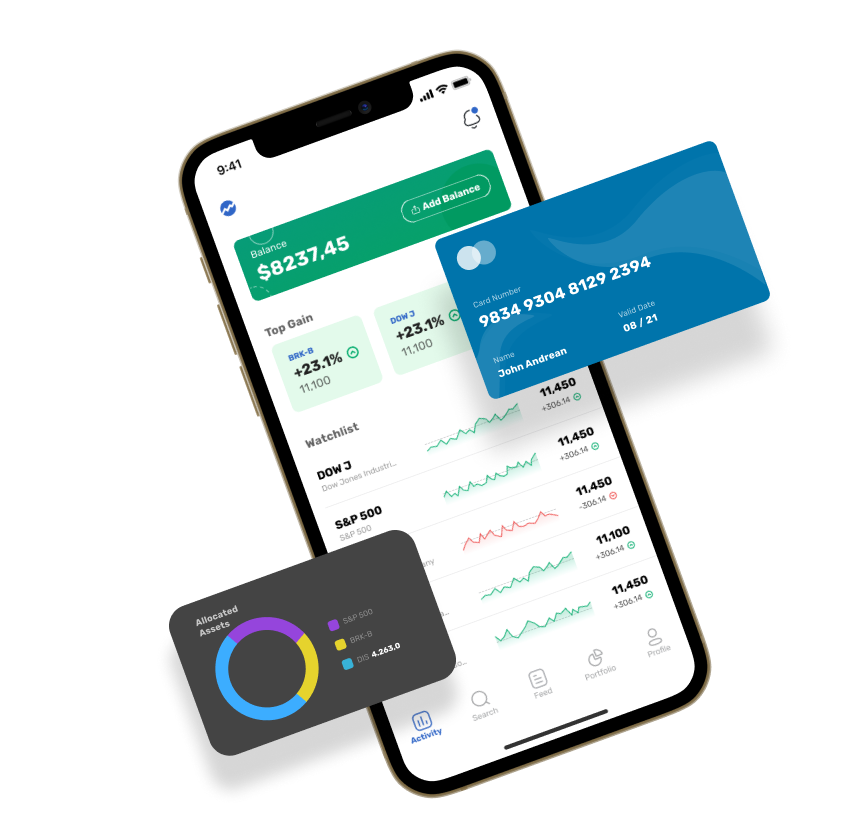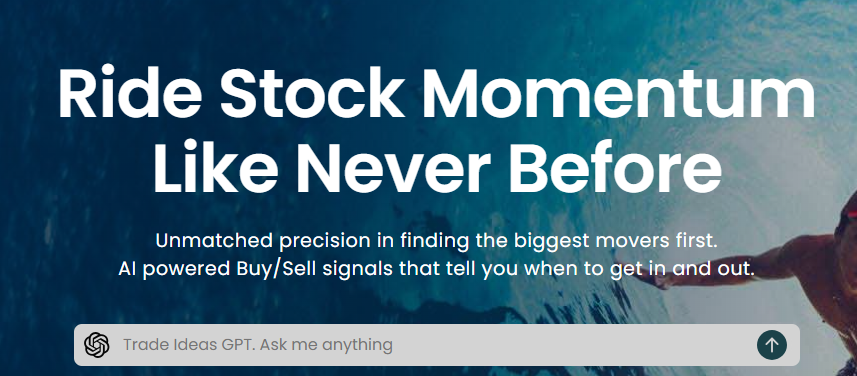20 New News On Choosing AI Stock Investing Platform Websites
20 New News On Choosing AI Stock Investing Platform Websites
Blog Article
Top 10 Suggestions For Looking At The Cost And Price Of Ai Stock Predicting/Analyzing Platforms
Assessing the cost and pricing of AI analysis and stock prediction platforms is essential to ensure that you get value from your investment without incurring hidden costs or unexpected expenses. Pricing structures can vary significantly, and knowing exactly the value you're paying for is essential to make an informed decision. Below are the top 10 ways to assess the price and expenses of these platforms.
1. Understand the Pricing Model
Subscription based: Verify if the platform charges monthly or annually, and also the features that each tier offers.
Pay-per-use: Determine whether you are charged according to the use of the platform (e.g. number of trades or data requests).
Freemium model: Assess whether the platform has an unpaid tier that has limitations on features and fees for premium features.
2. Compare Pricing Tiers
Feature breakdown: Compare what features are included in each price the tier (e.g., basic, professional, or enterprise).
Scalability. You must ensure that you are getting the best price to meet your requirements.
Upgrade flexibility - Look to see if there are options to easily change your plan or lower it if your needs be changing.
3. Evaluate Hidden Costs
Data fees: Check whether there are extra charges for data that is premium (e.g. live data, or advanced analytics).
Brokerage fees: Find out whether there are any additional costs for the platform to integrate with brokers or execute trades.
API use. Examine if additional charges are incurred for API access or frequent API usage.
4. Assess Free Trials and Demos
Trial period: Choose platforms that let you test the capabilities of their platform before you make an investment.
Check the limitations of a free trial. Does it offer all features?
No-commitment option: Make sure you can cancel the trial at any time should it not suit your needs.
5. Look for promotions and discounts. offers
Annual discounts: Check if your platform offers discounts on subscriptions that are paid annually, compared to plans that are billed monthly.
Referral Programs Check whether your platform offers discounts or credit to users who refer others.
Request pricing for institutional customers if you are part of an enterprise with many employees.
6. How do you assess return on Investment (ROI).
Cost in relation to. value: Assess whether the features and forecasts of the platform justifies the cost. Can it, for instance, help you to make better decisions in trading or help you save time.
Track record of performance Review the platform's rates of success or user reviews to determine the ROI potential.
Alternative costs: Compare the platform's cost with the cost of not using the platform (e.g. missed opportunities, time spent manually analyzing).
Review Policies on Cancellation and Refunds
Cancellation terms: Ensure you have the option to cancel your subscription with no penalties or hidden costs.
Find out if there's a refund policy for subscriptions that you have not used.
Auto-renewal. Check whether the platform automatically renews your account. If yes then you'll have to figure out how to unsubscribe.
8. Assess Transparency in Pricing
Clear pricing: Ensure that the pricing of the platform is clear and contains no hidden charges.
Customer Support: To clarify unclear prices and costs, contact customer service.
Contract Terms: Review the terms of service for any penalties or long-term agreements.
9. Compare to Competitors
Feature comparison Comparing the prices and features offered by the platform to its competitors to ensure you're getting the best price.
Review by users: Go through reviews from users on the platform to determine if it's worth the cost.
Review the market position of the platform. Does it meet your expectations?
10. Assess the long-term costs
Price increases: Look at the past history of the platform and note how often it increases prices.
Updates to features: See whether your current plan has new features or requires an upgrade.
Scalability Costs: Make sure platform pricing remains reasonable when your trading activities or requirements for data grow.
Bonus Tips
Try out different platforms. You can test a variety of platforms for free to test them and compare them.
Negotiate price: If your institution is heavy user, it's worth asking about discounts or custom pricing.
Find educational resources on the internet Certain platforms provide free educational tools or resources that can add value beyond their core features.
These suggestions will assist you to determine the cost and price of AI trading platforms that can predict or analyze the prices of stocks. In this way you can choose the platform that best fits your budget, and offers the features and performance needed. A balanced platform can offer you the most efficient of both: affordability and functionality. Take a look at the top rated read this post here on ai trade for blog info including ai for investing, incite, ai for stock predictions, best ai trading app, ai trade, best ai for trading, best ai for trading, best ai stock, using ai to trade stocks, best ai trading app and more.
Top 10 Tips To Assess The Risk Management Of Ai Stock Predicting Trading Platforms
Risk management is an important aspect of any AI trading platform. It helps to protect your investment and minimize the possibility of losses. A platform that has robust risk management tools can help you navigate volatile markets, and make informed choices. Here are ten strategies to help you evaluate the risk management abilities of these platforms.
1. Check out Stop-Loss and Take Profit features
Customizable levels - Make sure that the platform lets you adjust your stop-loss, take profit and profit level for each strategy or trade.
Trailing stops: Find out if the platform supports trailing stops that automatically adjust when the market shifts to your advantage.
You must determine if there are any stop-loss options that will ensure that your position will be closed at the specified price, regardless of whether markets are volatile.
2. Calculate Position Size Tools
Fixed amount. Be sure to have the option of defining your position sizes by a fixed dollar amount.
Percentage of Portfolio: Decide whether it is possible to set the position size as a percentage of the total portfolio so that you can manage risk in a proportional way.
Risk-reward ratio: Verify whether the platform allows setting risk-reward ratios on individual strategies or trades.
3. Look for Diversification Support
Multi-assets trade: Ensure that the platform is able to support trading across multiple asset categories (e.g. stocks, ETFs options, forex etc.) for diversification of your portfolio.
Sector allocation: Find out if your platform has tools for managing and monitoring the exposure of your sector.
Geographic diversification: Make sure that the platform allows trading in international markets to spread the geographic risk.
4. Review the margin and leverage controls
Margin requirements: Ensure the platform clearly states the requirements for margin for trading leveraged.
Leverage limits: Check whether the platform allows users to set leverage limits to control the risk of exposure.
Margin Calls: Verify that the platform sends out prompt notifications of margin calls in order to avoid the liquidation of your account.
5. Assessment and Reporting of Risk
Risk metrics: Ensure the platform offers key risk indicators (e.g. Value at Risk (VaR) Sharpe ratio, drawdown) to your portfolio.
Evaluation of scenarios: Ensure that the platform you're using permits you to create market scenarios and analyze risk.
Performance reports: Check whether the platform has comprehensive performance reports, which include the risk-adjusted return.
6. Check for Real-Time Risk Monitoring
Monitoring your portfolio. Make sure your platform can monitor in real-time the risk associated with your portfolio.
Alerts: See if you can receive real-time notifications for risk related (e.g. Stop-loss triggers and breach of margins).
Risk dashboards: Find out if the platform offers risk dashboards that can be customized to give you an extensive overview of your risk profile.
7. Assess Stress Testing and backtesting
Stress testing. Check that your platform allows you to test your portfolio or strategy under extreme market conditions.
Backtesting: Determine if the platform supports backtesting strategies based on previous data to evaluate the risk and effectiveness.
Monte Carlo simulations: Verify that the platform is using Monte Carlo simulations to model possible outcomes and determine the risk.
8. Evaluation of Compliance with Risk Management Regulations
Compliance with regulatory requirements: Ensure that the platform meets the relevant regulations for risk management in Europe and the U.S. (e.g. MiFID II).
Best execution: Verify that the platform follows best execution practices. Trades are executed at the lowest price that is possible in order to reduce the chance of slippage.
Transparency Verify the platform's transparency as well as clarity in risk disclosure.
9. Look for risk parameters that are user-controlled
Custom Risk Rules: Ensure that you can define custom rules for managing risk (e.g. an amount that is the maximum loss per day, a maximum amount of tradeable position).
Automated risk control: Check if the platform can automate the enforcement of risk management rules based on your predefined criteria.
Manual overrides Determine for the possibility of manually overriding the risk control system that is automated in the event of an emergency.
User feedback from reviewers and case studies
User reviews: Read user feedback and analyze the effectiveness of the platform in managing risk.
Testimonials and case studies: These will highlight the risk management capabilities of the platform.
Community forums: Check if the platform has an active user community where traders can share tips for managing risk and strategies.
Bonus Tips
Free trial period: Try the risk management capabilities of the platform in real-world scenarios.
Support for customers - Ensure that your platform provides a solid assistance for any questions or issues related to risk.
Educational resources - See whether the platform provides educational resources and tutorials about risk management best practice.
By following these tips you can determine the capabilities of an AI software for analyzing and predicting stocks to manage risks. This will allow you to select a system that protects your capital, and minimizes any potential losses. To stay out of unstable markets and to achieve long-term trading successes you require a reliable risk management software. Read the top rated ai options trading info for blog advice including ai for trading stocks, chart ai trading, best ai penny stocks, best ai stocks to buy now, invest ai, ai stock price prediction, ai in stock market, ai stock analysis, stocks ai, stock predictor and more.